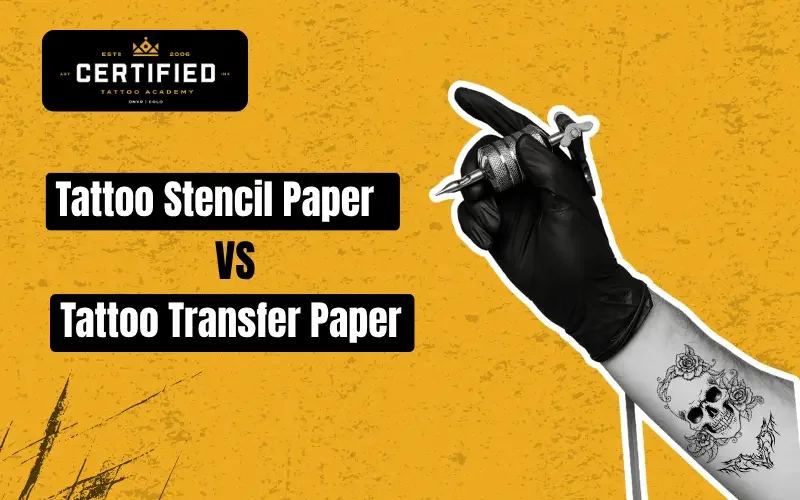Tattoo Stencil Paper vs Tattoo Transfer Paper: What’s the Real Difference?
If you’re starting your journey as a tattoo artist, you’ve probably heard people mention both tattoo stencil paper and tattoo transfer paper. They sound similar and sometimes even get used interchangeably, but they’re not the same. Understanding the difference will save you time, frustration, and mistakes when creating clean, professional stencils for your clients.
Below, we’ll break down what each type of paper is, how it works, and when to use it in your tattoo process.
What Is Tattoo Stencil Paper?
Tattoo stencil paper is specifically made for creating the outline of a tattoo design that can be applied directly to the skin. Think of it as the blueprint for your tattoo.
Key features of stencil paper:
Multiple layers: Usually a top white sheet (where the design is copied), a protective sheet, a carbon or purple layer that transfers the design, and a backing sheet.
Purpose: To create a crisp outline of the design that you can trace with your tattoo machine.
Popular brand: Spirit stencil paper is widely used in professional studios for its consistent quality.
When to use: Anytime you want to transfer your hand-drawn or printed design to a client’s skin before tattooing.
What Is Tattoo Transfer Paper?
Tattoo transfer paper is a broader term. It includes any paper used to move a design from one surface to another, and stencil paper is actually one type of transfer paper.
Common types you’ll see in tattooing:
Thermal transfer paper: Used with a thermal copier to reproduce digital designs.
Hand-drawn transfer paper: Lets you trace designs manually with a stylus or pen.
Printer transfer sheets: Special papers that allow inkjet or stencil printers to create stencils.
In other words, all stencil paper is transfer paper, but not all transfer paper is stencil paper. Transfer paper can also refer to products in crafts or vinyl work that have nothing to do with tattoos, so always double-check you’re buying paper made for tattooing.
Key Differences at Tattoo Stencil Paper and Tattoo Transfer Paper
| Feature | Stencil Paper | Transfer Paper (General) |
|---|---|---|
| Purpose | Creates a tattoo outline on skin | Moves a design between surfaces |
| Material | Multi-layer sheet with carbon/purple layer | Varies: thermal sheets, vinyl transfer film, craft papers |
| Use in Tattooing | Standard method for tattoo stencils | Broad term; includes stencil paper and other specialty papers |
| Equipment Needed | Can be used by hand or with thermal copier | Depends on type — some need a printer or heat source |
Which One Should You Buy as a Beginner?
If your goal is professional tattooing, tattoo stencil paper is the product you need. It’s designed for skin application, gives clean lines, and works whether you hand-trace or use a thermal copier.
Transfer paper sold for crafts or vinyl projects will not perform the same on skin. Using the wrong paper can lead to blurry lines, fading outlines, or wasted time redoing stencils.
The Takeaway
The terms can be confusing, but here’s the simple truth: stencil paper is the specific kind of transfer paper made for tattoos. If you’re training to become a tattoo artist, invest in professional-grade stencil paper and learn proper application techniques.
At Certified Tattoo Academy, I teach aspiring artists how to work with professional tools from transfer papers to tattoo machines so your designs stay sharp from stencil to finished tattoo.
Frequently Asked Questions
-
No. Stencil paper is single-use. Reusing it can distort the design and risk cross-contamination.
-
Not always. You can hand-trace your design with a stylus or pen. A thermal copier just speeds up the process for complex designs.
-
Professional-grade tattoo transfer papers are skin-safe when used with proper stencil solution. Always check for allergies during client consultation.
-
Spirit paper is specifically designed for tattooing, providing a crisp, long-lasting outline. Generic transfer papers may be meant for crafts and won’t stick or hold up on skin.
-
Yes, but it’s not recommended for professional work. You can freehand directly on the skin with a skin-safe marker, but transfer paper ensures accuracy and consistency.

